
|
 |

|
|---|
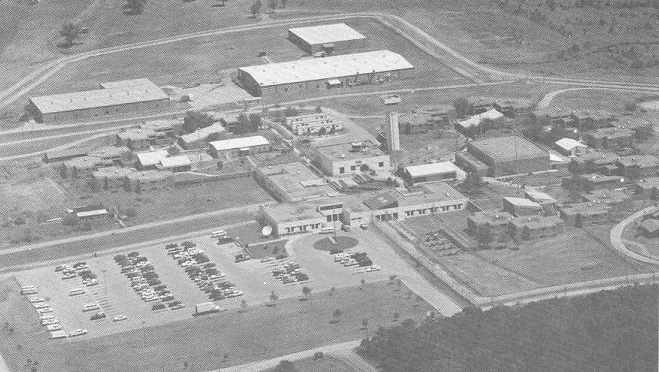
Joseph Harp Correctional Prison
(PART B)
8.0 – REPEAL -- ITS PHYSICAL/FINANCIAL IMPACT ON
-- FUTURE CRIME AND PRISON EXPENDITURES:
While researching the numerous prison records for this report, it was noted (by physical head count) that approximately 50% of the state’s prison population was either serving time for OR HAD previously been convicted of some sort of Drug War Crime offense. --- WE REPEAT; Approximately fifty percent (50%) of our present day prison population has some sort of a drug offense history.
Additionally, our findings also show that approximately 45% of our present-day population is presently under incarceration (at least in part) for some sort of drug offense. And this figure was derived “ONLY AFTER GREAT PAINS” were taken to exclude such substances as ALCOHOL and TOBACCO, which (while classified as DRUGS by various governmental agencies), are NOT so classified as such by this report. *
That approximately 16% of the current total prison population is presently under incarceration for some sort of Marihuana related offense. That is to say that at least one of the offenses that they were convicted of was related to Marihuana in some way. AND that of this figure approximately 1/3 (one-third) or approximately 5% of our total prison population are presently under incarceration SOLELY for Marihuana related offenses. That is to say that if Marihuana were not against the law in the first place, then NONE of their (alleged committed) offenses would have been illegal to begin with.
Which in turn means that IF MARIHUANA WERE NOT AGAINST THE LAW then roughly 5% of our total prison population would NOT PRESENTLY BE INCARCERATED IN OUR STATE PRISON SYSTEM. Not to mention that the remaining 11% of our prison population, for whom Marihuana was on of their related offenses, would be given reduced sentences.
* Note: Oklahoma’s Department of Corrections puts the figure at 28%, however as has been shown in previous sections, they are able to do so ONLY by the use of “Slight of Hand” manipulation of the statistics”.
8.1 – REPEAL -- FINANCIAL IMPACT OF
-- PRESENT-DAY VS: FUTURE CRIMINALITY
Given the previously stated figures (above), one would be tempted to say that IF MARIHUANA WERE LEGALIZED TOMORROW:
- That 5% of our prison population would automatically be emptied out.
- That an additional 11% of our prison population (now eligible for reduced sentencing), would also lead to earlier releases, etc.
First, granted, there will be a great reluctance on the part of our present day (powers-that-be) to implement such a (what to them must be a major and very negative policy) change. Just pretend that you’re a shop owner and you’ve just lost about 8% of your customers. Thus it stands to reason that they will foot drag and do everything within their power to maintain our present-day prison population as is. But in general we can expect that the vast majority (after massive court battles) of those incarcerated SOLELY for Marihuana related crimes will indeed be released.
HOWEVER this (in our opinion) will ONLY be the starting point. It is our prediction that IF Marihuana were once more re-legalized, that OVERALL CRIME itself would drop and DROP BIG time. A subject matter that of-and-of- itself requires some explanation. Let us begin by looking at the following chart, showing the (nationwide) prison population; Before and After Richard Nixon declares his “War On Drugs”.
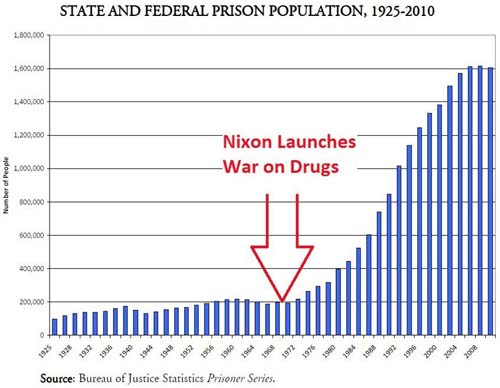
Nixon’s Prison Chart (Located via the Internet)
NOTE, What is known in the world of economics as a hockey-puck curve, meaning that it starts out real slow and then takes off like a Bat out of Hell.
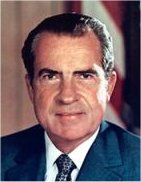
|
President of the U.S. RICHARD MILHOUS NIXON LAUNCHES HIS WAR ON DRUGTS IN 1971 |
|---|
Now let’s look at this same curve, using ONLY State of Oklahoma prison data.

Oklahoma’s Prison Population (As per Department of Corrections, Annual Reports) [24]
Once more one can see the same “Hockey-puck” curve (a bit inverted here), starting out real slow, but just like the national figures, quickly taking off (along with the War on Drugs) like a Bat out of Hell.
Now let’s look (below) at an interesting table (courtesy – Dept. of Corrections, 1985 annual report), showing what the state prison population looked like from 1950 up until the mid-1980’s. Note that it stayed steady (along with Oklahoma’s population) all the way until the beginning of Nixon’s War of Drugs.
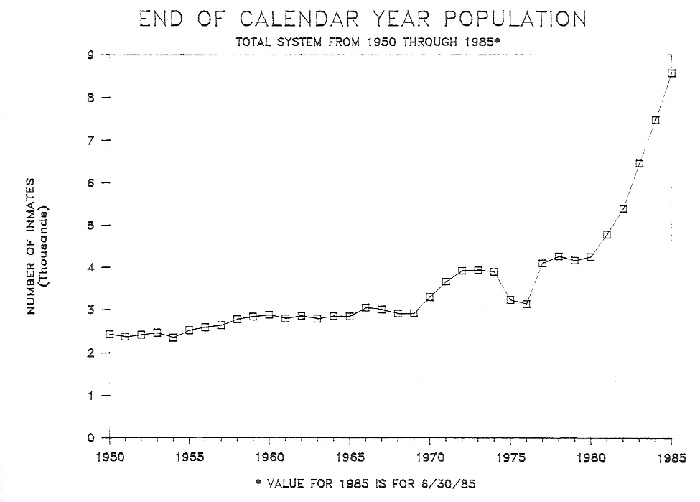
Chart as per Annual Report (1985); Dept. of Corrections
Note that between 1950 -to- 1970 the state population almost doubled, yet its prison population stayed very stable. – It was only AFTER President Nixon’s 'War on Drugs' began that the prison population grew and grew.
The following table shows how Oklahoma’s population was growing during that same period of time. Note that our state’s population (from 1971 to the present day) grew only by around 100%, while our prison population grew 800% during that same time period. [25]
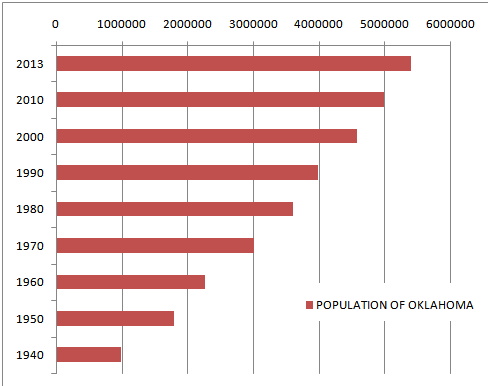
Simply put before Nixon, Oklahoma’s prison population was stable at around 3,000 prisoners, growing only just a bit along with the general population. After Nixon, it began to grow at a rate of over 5% per year (from an ever-increasing baseline), meaning that (courtesy of the War on Drugs) it grew like a bat out of hell. And while some will no-doubt say that it is the DRUGS (or in our case) the MARIHUANA itself that lead to the creation of the crime, the evidence (as seen via the prison records) shows otherwise. That it is the DRUG LAWS “OF-AND-BY-THEMSELVES”, that are the cause of increased crime; --- A factor now being referred to as the “Gateway Element to Crime”.
8.2 -- MARIHUANA PROHIBITION LAWS
--- As the Gateway element to Copper Thefts:
How do the Marihuana Laws lead to copper thefts? How can this be so?
The answer is somewhat complex, but can be greatly simplified by knowing something about what Romanians know of as “THE OLD GYPSY CURSE.”
 In Romania they have what is known as “The Old Gypsy Curse.” You see, in Romania, everyone knows that Gypsies are all a bunch of stealing thieves, and therefore who in their right minds would want to hire a thief. Why they will be going in-and-out of your small shop three times a day---stealing everything that they can from you. Hire a Gypsy to work in your factory, ---Why half the tools would be stolen within a month, etc. . . This image of the Gypsy is so widely accepted that Gypsies simply can’t get normal jobs, . . . . BUT WAIT, how are they supposed to feed themselves, their families? How are they supposed to take care of their children? Simply put, circumstances have left them with but one job option. And after-all, everyone already thinks of them as thieves anyway, . . AND so goes “THE OLD GYPSY CURSE,” ---That of a serpent eating its own tail. |
Here in America (and especially in Oklahoma), we also seem to have our very own version of the curse. But in our case, maybe a better term for it might be, “THE OLD MARIHUANA ARREST CURSE”.
Basically, it runs something as follows:
- A young boy arrested at a marihuana party.
- The Judge (thinking he is cool) gives the boy a suspended sentence. AND A CRIMINAL RECORD AS A DRUG USER
- Due to his arrest record, the young boy is now unable to get scholarships/financial aid for collage. So much for that option.
- Young boy next tries to get into a Union apprentiship program; --- Without any luck --- too many others also want to enter these same apprentiship prgrams and HE HAS A DRUG CONVICTION.
- Young boy also finds out that he is also unable to get a good paying job anywhere (hey, who wants to hire a DRUG ABUSER)
- The young boy (now a young man) is evenb unable to join the military – They don’t want DRUG ABUSERS THERE EITHER
- Young man now finds out (average time being around 3 to 4 years after his DRUG CONVICTION) that he can only get crummy jobs, paying minimum wage.
Simply put, the starter element was NOT THE MARIHUANA, but instead the very prohibition laws against Marihuana themselves that were the starter element down the road toward a life of crime. And granted, (again) some readers will undoubtedly say that as this report was being put together by those with an anti-prohibition agenda. That their minds were therefore clouded with preconceived notions. In other words, that the authors of this report saw in the prison-data, that which we wanted to see as opposed to the actual truth.
But (ignoring the numerous steps taken to safeguard against this), we feel that the prison data of-and-by-itself, speaks for itself. There were just too, too many similar cases where that very first step WAS THAT INITIAL MARIHUANA ARREST to come to any other conclusion. And the pattern repeated itself -- ALL SO MANY TIMES.
- The second arrest would take place (again about 3 to 4 years later) for sales.
- Then the next arrest would be for something that we would call serious. Meaning that by now, we’ve crated a full-blown criminal.
they became violent ONLY when they got out of jail.”
THUS beyond having an immediate financial impact (for taxpayers) with regards to state prison expenditures. We must (from a financial standpoint) also take notice of the secondary (and much greater) long-term financial savings of ending the prohibition. A factor being referred to as the “Gateway Element to Crime”, and how repeal actually closes that gateway.
If one needs proof of this, just look at who’s in the White-House today; --- and remember, he openly admits to its use in his teens. One can only wonder what would have happened if Mr. Obama had been arrested for Marihuana when he was a teen? One thing is for sure, whatever else would have happened to him, he probably wouldn’t have been president of the United States.
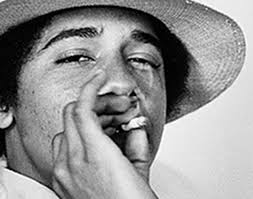
|

|
|---|
However, here (as stated elsewhere) we purposely have chosen to avoid moral issues and as such bring this issue SOLELY because of its financial implications and costs to the taxpayer.
FOOTNOTES:
[24]- The following table contains the actual 'official annual' prisoner numbers, as per various Dept. of Corrections 'Annual Reports':
| 2013 | 26,539 | 2003 | 23,006 | 1993 | 16,148 | 1983 | 7,122 | 1973 | 3,239 |
| 2012 | 25,889 | 2002 | 22,981 | 1992 | 14,426 | 1982 | 6,481 | 1972 | 3,303 |
| 2011 | 25,458 | 2001 | 22,737 | 1991 | 13,059 | 1981 | 5,069 | 1971 | 3,295 |
| 2010 | 25,935 | 2000 | 22,666 | 1990 | 12,091 | 1980 | 4,595 | - | - |
| 2009 | 25,200 | 1999 | 21,788 | 1989 | 11,274 | 1979 | unknown | - | - |
| 2008 | 25,297 | 1998 | 20,654 | 1988 | 10,132 | 1978 | unknown | - | - |
| 2007 | 25,023 | 1997 | 20,654 | 1987 | 9,884 | 1977 | 4,487 | - | - |
| 2006 | 24,376 | 1996 | 19,586 | 1986 | 9,288 | 1976 | 4,174 | - | - |
| 2005 | 23,948 | 1995 | 17,983 | 1985 | 8,567 | 1975 | 3,523 | - | - |
| 2004 | 23,221 | 1994 | 16,705 | 1984 | 7,934 | 1974 | unknown | - | - |
[25]- The following table shows how Oklahoma’s population was growing during that same period of time. Note that our state’s population (from 1971 to the present day) grew only by around 100%, while our prison population grew 800% during that same time period. As per US census data
http://en.wikipedia.org/wiki/War_on_Drugs#Arrests_and_incarceration
| 2013 | 5,397,821 |
| 2010 | 4,983,928 |
| 2000 | 4,567,835 |
| 1990 | 3,983,621 |
| 1980 | 3,597,675 |
| 1970 | 2,998,367 |
| 1960 | 2,267,984 |
| 1950 | 1,786,050 |
| 1940 | 987,459 |
 PRISON REPORT PREVIOUS SECTION |
 |
 PRISON REPORT NEXT SECTION |
 PRISON REPORT BACK TO MAIN INDEX PAGE |